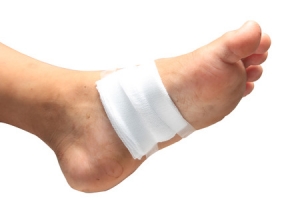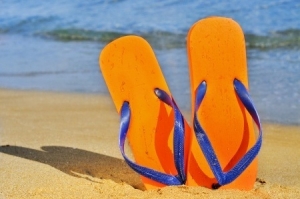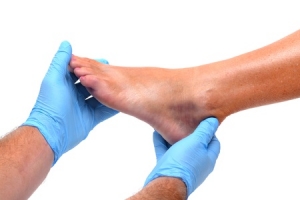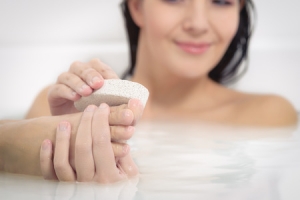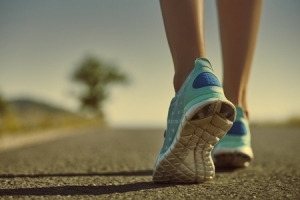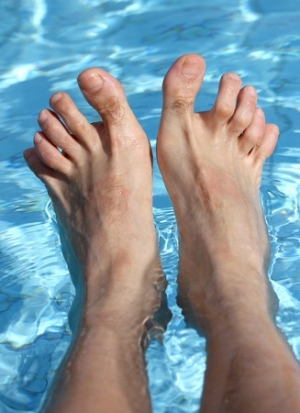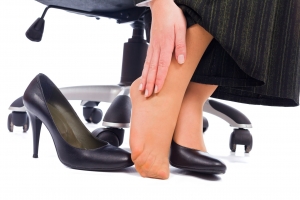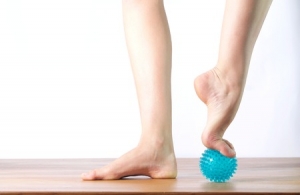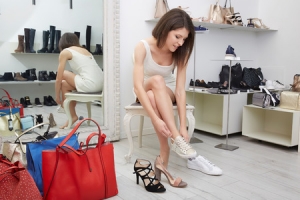Connect With Us
Blogs
Displaying items by tag: Bunions
Diabetic Foot Ulcers Can be Prevented
Did you know that the leading cause of lower extremity amputations not caused by trauma is diabetes? And, foot ulcers precede 85 percent of these amputations. At Superior Foot & Ankle Care Center we want patients to know that diabetic foot ulcers can be prevented and our podiatrists, Dr. Victoria Foley and Dr. Constance Omelas will work with you to develop a care regimen and monitor your feet as a diabetic patient. Adhering to a schedule of regular podiatric checkups is an important step in protecting your feet if you have diabetes. Below are other areas where you can be proactive in preventing ulcers:
Healthy Foot Habits—in addition to regular podiatric exams, doing your own self-exams at home is also very important. Foot ulcers commonly form on the soles of the feet so be sure you check the bottom of your feet carefully (or have someone do it for you) and the rest of your feet as well on a daily basis. Report any redness, sores, blisters, rashes or cuts to the foot doctor asap. You should also wash your feet daily and dry completely. Use foot powder and change your socks whenever you notice that your feet feel damp. This will reduce the risk of bacterial and fungal conditions which can lead to infections and wounds.
Footwear—the shoes you wear can play a big part in preventing conditions that can lead to wounds. Choose styles that are made of soft, flexible material and have wide, roomy toe boxes. Shoes that squeeze toes together can increase the risk of ingrown toenails and blisters and hasten the progression of toe problems like hammertoes and bunions. Periodically run your hand around the inside of your shoes to make sure there are no small pebbles stuck inside or loose stitching that can rub against the skin and cause an irritation.
Lifestyle Choices—one of the most important steps you can take for preventing ulcers is keeping your blood sugar levels where they should be. Follow the dietary plan your doctor has given you and fill your menus with nutrient-rich foods that are low in sugar. Don’t smoke because it impedes circulation. Limit alcohol use as this has been linked with an increased risk of foot ulcers.
If you have diabetes and have additional questions about how to best care for your feet and prevent diabetic complications, contact our Long Beach office by calling: (562) 420-9800.
Free Your Feet from Shoes that Hurt
Freedom is a word frequently associated with Independence Day and here at Superior Foot & Ankle Care Center, it’s also a reminder that many patients are wearing shoes that too small for their feet. Improperly fitting shoes is one of the top causes of foot pain and can lead to chronic foot disorders such as plantar fasciitis and fallen arches. Follow the tips below on your next shoe shopping trip to ensure a good fit:
- Don’t buy shoes without trying them on. Even if you think you know your size, fit can vary based on the manufacturer and the shoe style.
- Get your foot professionally measured. There are two good reasons for this. First, most people have two different sized feet. You’ll want to buy shoes to fit the bigger foot. Also, your shoe size may increase as you get older or if you’ve recently given birth.
- Shop at the end of the day. Your feet are at their largest and most swollen after you’ve been on them all day. A common foot shopping faux pas is buying shoes early in the day and then finding when you wear them that you can’t wait to take them off at the end of the day because they make your feet hurt.
- Focus on the toes. Many common toe problems such as bunions, hammertoes, ingrown toenails, and corns are made worse by shoes that have narrow toe boxes. High heels can also force toes into a cramped position. You should be able to wiggle all your toes freely in a properly fitting pair of shoes and there should be at least a half an inch of space between your longest toe and the front of the shoe.
- Avoid styles that are completely flat with no arch support. In addition, if the foot doctor has prescribed an orthotic device, bring it with you and try on with the shoes you are considering.
- Try on both shoes and take your time walking around the store to make sure they are comfortable. When you take the shoes off, check for red marks on your feet which may indicate friction or rubbing from the shoe.
If you are experiencing chronic foot aches and pains, schedule an appointment at our Long Beach office by calling: (562) 420-9800. Our podiatrists, Dr. Victoria Foley or Dr. Constance Omelas will evaluate your feet and determine whether it’s your shoes or another problem that is causing your discomfort.
Flip-Flop Fail
They’re so easy to wear—just slip them on and off you go. In flip-flops your feet feel so free, as if there’s hardly anything there and that’s the problem! There isn’t. At Superior Foot & Ankle Care Center we know many of our patients love flip-flops and wear them nearly every day but unfortunately, it’s a shoe choice that can leave your feet vulnerable to injury and result in serious foot problems. Here’s why:
Increased Risk of Injury—let’s start with the obvious: flip-flops provide very little protection for your feet. Since they are so exposed, your toes are not shielded from getting stubbed and cuts can happen when your foot slides off the shoe. In addition, because there are no sides to hold your foot in place, flip-flop wearers are more likely to sprain an ankle.
Toe Stress—think about the motion required to keep flip-flops on. Your toes are constantly gripping the front of the flip-flop. With extended use, the strain to the toes can cause tendonitis and toe deformities such as hammertoe and bunions.
The Fracture Factor—with literally no cushioning, flip-flops offer zero shock absorption as you walk. The repetitive pounding on the bottom of your foot and lack of arch support can result in stress fractures, heel pain and plantar fasciitis. You may also find that you experience pain in your ankles, knees, hip and back because of the altered gait that comes about with prolonged flip-flop use.
Finding a Better Flip-Flop
Due to the popularity of this type of footwear, some manufacturers have begun to make shoes that offer the easy style of flip-flops but with an eye to lessening the damage to your feet. If you are frequent flip-flop wearer, look for the following
- A built-up centerpiece for arch support
- Flip-flops made of leather instead of plastic or vinyl to reduce blisters
- More substance—if you can bend a flip-flop completely in half it does not have enough cushioning or support
- A back strap
If you’ve been wearing flip-flops as your go-to shoes for a long time now and are experiencing pain in your ankle, toes, heel or forefoot, make an appointment at our Long Beach office by calling: (562) 420-9800. Our podiatrists, Dr. Victoria Foley or Dr. Constance Omelas will examine your feet and make specific recommendations about shoe choices that will be the healthiest for your feet.
Protecting Yourself with PAD
Peripheral arterial disease (or PAD) often affects patients that have diabetes. At Superior Foot & Ankle Care Center we always caution these patients to take extra care with their feet due to the serious one-two punch these diseases can deliver. PAD is a disease that results in poor circulation. Good blood flow is necessary for healing. Patients with diabetes often experience neuropathy or loss of sensation in their feet and toes. This means it can be difficult to perceive pain, heat or even itchy rashes—all of which may signal a situation that would result in an open sore or wound. Add PAD to that and you could end up with an ulcer or wound on your foot that will not heal. This, in turn, can lead to a dangerous infection, and, in the worst case scenario, possible amputation.
Simple Precautions
If you have diabetes you should already be on a regular schedule of checkups with our podiatrists, Dr. Victoria Foley and Dr. Constance Omelas in order to carefully monitor your condition. The foot doctor will also look for signs of PAD. In addition to having diabetes, other factors that increase your risk for PAD include:
- Being over age 50
- Smoking
- Sedentary lifestyle
- High cholesterol
- High blood pressure
- Family or personal history of PAD
With or without PAD it’s important to avoid putting your feet at risk of injury or infections. To this end, you should:
- Avoid walking barefoot. In public places, this will reduce your risk of coming in contact with fungi and bacteria that can cause infections like athlete’s foot and fungal toenails. At home, you will be far less likely to get a cut or puncture wound on the bottom of your foot if your feet are covered.
- Wear shoes that fit properly. Shoes that are too small can cause blisters or exacerbate conditions such as hammertoe and bunions. Periodically check the insides of your shoes to make sure there are no rough spots or loose stitching to cause friction against your skin.
- Keep skin soft and supple by applying a rich moisturizer to your feet. Avoid the area between your toes, however, to prevent an excessively moist environment where fungi can breed.
- Get in the habit of checking your feet regularly for any changes or abnormalities. If you spot anything unusual, contact our Long Beach office immediately to get it checked by calling: (562) 420-9800.
5 Ways to Take Better Care of Your Feet
At Superior Foot & Ankle Care Center we believe in being proactive when it comes to the health of your feet. In honor of Foot Health Awareness Month, we’d like to offer the following tips for taking care of your feet:
- Wear shoes that fit. This is one of, if not the single biggest steps you can take to prevent foot and ankle injuries and disorders. Some studies have shown that up to 90% of people are wearing shoes that are the wrong size! Shoes that are too narrow or tight in the toe box can encourage deformities such as bunions and hammertoes as well as increase the risk of ingrown toenails and fungal infections. Get your foot professionally measured at the shoe store. Shoe size can change as you age and during pregnancy.
- Get in the habit of doing self-exams on your feet. Changes in the skin or nails of your feet, as well as shape, size or color, can all be indicators of potential foot problems. Any differences in sensation (burning, numbness, tingling), swelling or abnormal growths should be reported to our podiatrists, Dr. Victoria Foley and Dr. Constance Omelas promptly. Early detection of a foot problem can mean a better outcome and less invasive treatment.
- Limit time going barefoot. Bare feet in public places are at a higher risk for coming in direct contact with fungi and bacteria that cause infections such as athlete’s foot and fungal toenails. Even at home, however, going barefoot increases your risk of puncture wounds and injuries.
- Don’t neglect foot hygiene. Basic daily care of your feet should include washing with soap and water (and drying completely) as well as applying foot powder or moisturizing lotion, depending on your individual needs. Don’t wear socks more than one day and alternate our shoe choice as well.
- Live a Healthy Lifestyle. You may not think about it but maintaining a healthy weight, exercising and getting regular checkups all contribute to the health and well being of your feet. Be sure that you monitor chronic diseases such as diabetes and arthritis and follow your physicians’ instructions for keeping this conditions under control.
If you have questions about how to best care for your feet, contact our Long Beach office by calling: (562) 420-9800.
Walk Your Way to Better Heart and Foot Health
February is American Heart Month and we at Superior Foot & Ankle Care Center want to encourage an activity that will benefit your heart as well as your feet: walking. According to the American Heart Association, brisk walking can lower your risk of diabetes, high blood pressure, and high cholesterol—three factors that greatly increase your risk of heart disease. All of these types of disorders can negatively impact your circulation. With your feet being the part of your body farthest from your heart, circulatory issues are particularly important to good podiatric health. In addition, walking helps you maintain a healthy weight—another plus for protecting your heart and your feet. So, what are you waiting for? Below are a few tips to help you get started.
- Start with good shoes. Walking is appealing because it doesn’t require a lot of expensive equipment and you can do it practically anywhere. The one thing you do need, however, is a good pair of shoes. It’s best to get your feet professionally measured at a shoe store that specializes in athletic footwear. If you have an existing foot disorder such as bunions or plantar fasciitis, talk to one of our podiatrists, Dr. Victoria Foley or Dr. Constance Omelas to learn about designs that will best accommodate your condition. The foot doctor may prescribe an orthotic device to improve comfort and function of your feet.
- Pace yourself. While 30 minutes a day is the goal, every step puts you on the path to better health. If you’ve been sedentary for a while it’s a good idea to start small and gradually increase the speed and length of your walks. Can’t find 30 consecutive minutes? Take two 15-minute walks. Look for ways to sneak in extra steps: walk while you talk on the phone, park farther away from the office or stores, take the stairs instead of the elevator or escalator.
- Make it enjoyable. Walk and talk with a friend, watch your favorite television series while on the treadmill or make walking a bonding opportunity with your teenager. You are much more likely to stick with an activity if you like it.
Within a short time, your walking program will begin to pay off. Not only will your heart and feet be healthier, you’ll sleep better and be more focused during the workday. If you have additional questions about walking and your feet, contact our Long Beach office by calling: 562-420-9800.
Myths about Hammertoes
At Superior Foot & Ankle Care Center we often find that patients have no trouble identifying a hammertoe—its telltale downward bent at the joint makes it fairly obvious—but often that’s where the knowledge stops. Too often patients suffer for a long time with a hammertoe because they do not fully understand the condition and their treatment options. Below some common myths about hammertoes are dispelled to help patients be more informed about this condition:
MYTH: Hammertoes are caused by shoes that are too tight.
TRUTH: It’s true that improperly fitting shoes can contribute to or exacerbate the condition of hammertoe but usually a muscle/tendon imbalance predisposes the toe to bend downward. In some cases, one toe is longer than the others and pushes up against the front of the shoe. Hammertoe can also be genetic, the result of arthritis or a neurological or structural issue.
MYTH: It’s possible that over time hammertoes will get better without treatment.
TRUTH: Hammertoes are a progressive condition. Although they may progress at varying rates they will not improve and will, in fact, worsen to the point of being disabling if not treated. It’s important to have one of our podiatrists, Dr. Victoria Foley and Dr. Constance Omelas examine your hammertoe to assess how far it has progressed. The foot doctor may order x-rays to get a better look at the current state of the joint and will also want to get a complete medical history. Hammertoes should be monitored by the podiatrist.
MYTH: There’s no real treatment for hammertoes.
TRUTH: Actually there are several conservative options available to the foot doctor to help decrease pain, increase comfort and slow the progression of a hammertoe. These include: strapping or taping the toe to establish realignment, using a custom orthotic device to correct or compensate for a muscle tendon imbalance and doing stretching and other exercises to increase flexibility and strengthen supporting muscles. In addition, patients should choose shoes with low heels that have roomy toe boxes and are made of soft materials to avoid further stress to the toe and irritations such as corns, calluses, and ulcers from developing. If none of these treatments are successful or there are other deformities such as bunions in addition to the hammertoe the foot doctor may recommend surgery to correct the problem.
You have options so don’t suffer needlessly. If you have a hammertoe contact us for an appointment at our Long Beach office today by calling: 562-420-9800.
Shoe Choice Affects Foot Health for Women
At Superior Foot & Ankle Care Center we treat many women with foot problems that could have been avoided by choosing different shoes. Today, there are many attractive shoe designs that do not harm your feet. Short-term fashion choices can lead to long term foot health problems. Below are 3 types of shoes to avoid:
- High heels—shoes with high heels (2 inches or more) can cause a host of foot problems. First, the height of the heel can cause wobbling and instability which results in ankle sprains. High heels put extra strain on the muscles and ligaments of the ankle as they struggle to keep your foot in proper position. Continuing to wear high heels after a sprain is likely to set up a dangerous cycle of repeated sprains, increased weakness and eventually chronic ankle instability and pain. In addition, the design of high heels forces your toes forward, causing them to spend long hours cramped and squeezed. This increases the risk of bunions, hammertoes and other toe deformities.
- Stiff backed pumps—shoes with an overly hard heel counter can lead to a condition commonly referred to as “pump bump.” Officially known as Haglund’s deformity, a hard, bony enlargement forms on the back of the heel. When the back of pump rubs against the growth it causes irritation and inflammation. In some cases the bursa sac surrounding the deformity can become inflamed causing bursitis.
- Flip-flops—yes, these are comfortable and oh-so-easy to slip on and off but flip flops provide no support whatsoever for your feet. This increases the risk of your feet coming out of the shoe and getting cut or scraped and also the chances of twisting an ankle. The one exception to this is in gyms, public pools, spas and other places where covering your feet prevents contact with fungi and bacteria that can cause athlete’s foot, fungal toenail and
If a part of your foot, toe or ankle is causing you pain or you notice other symptoms such as bruising, swelling or redness, contact our Long Beach office for an appointment by calling: 562-420-9800. Our podiatrists, Dr. Victoria Foley and Dr. Constance Omelas will examine your feet and prescribe the correct treatment (in addition to changing your shoes) to relieve pain and prevent further injury.
5 Exercises for Your Toes
Are you taking your toes for granted? At Superior Foot & Ankle Care Center we find many patients do. Your toes help you maintain your balance and enable you to push off when your walk. If toes hurt or become deformed it can lead to serious disability. Below are 5 simple exercises that will keep toes flexible and help ease foot pain for conditions such as hammertoe, bunions, toe cramps, plantar fasciitis and more:
- Big Toe Pulls: In a seated position, place feet next to each other and place a thick rubber band around the two big toes. Pull them apart, moving each toe toward the little toes. Hold the position for 5 seconds. Repeat 10 times.
- Put a Cork in It: Take small corks and place them between each of your toes on one foot. Squeeze toes together and hold for 5 seconds. Do 10 repetitions with each foot.
- Marble Pick-Up: Sitting in a chair spread 20 marbles on the floor in front of you. Pick up each marble, one at a time, with the toes of one of your feet and deposit them in a bowl. After you pick up all 20 marbles, spread them back on the floor and pick up with the other foot.
- Towel Curls: While sitting, spread towel on the floor in front of you. Using the toes on both your feet pick up the towel by curling it toward you. Repeat 5 times. Relax toes and rest a few seconds between repetitions.
- Golf Ball Massage: When you’ve finished the above exercises, reward your feet by place a golf ball on the floor and rolling it under each forefoot for 2-3 minutes.
Of course toe exercises are not a cure or solution to chronic foot pain. If you are experiencing discomfort in your feet or toes, make an appointment at our Long Beach office so that our foot doctors, Dr. Victoria Foley and Dr. Constance Omelas can examine your feet and arrive at a correct diagnosis and appropriate treatment for your foot or toe pain. Contact us by calling: 562-420-9800.
Show Your Feet Some Lovin’ With Shoes That Fit
Did you know that August 17th is National I Love My Feet Day? At Superior Foot & Ankle Center we can think of no better way to tell your feet you care then by buying shoes that fit properly and are good for your feet. Many common foot problems can be avoided by wearing the correct shoes for your feet. Here are some tips on shoe shopping:
- Buy shoes based on quality of construction and materials that are designed for the health of your feet not on fads and appearance.
- Be sure any shoes you choose take current foot problems you have into consideration. At your next checkup with our podiatrists, Dr. Victoria Foley and Dr. Constance Omelas, ask if there are special features you should look for or avoid when buying shoes. In many cases, such as with bunions, hammertoes, flat feet or high arches, the foot doctor can make recommendations about shoe design that will decrease discomfort and help prevent a foot condition from getting worse. In some cases, a custom orthotic device may help shift pressure away from an area that hurts. If the podiatrist prescribes an orthotic be sure to bring it with you to try on with the shoes you are considering buying.
- Get your feet professionally measured. Feet can change size as you age. It’s not uncommon to find that one of your feet is larger than the other. You should always buy shoes to fit the bigger foot. Also, don’t assume once you know your size that you all brands will fit the same. Always try on shoes before purchasing.
- Heel heights of 1 inch or less are best. The higher the heel, the more pressure that is exerted on the forefoot. Avoid pointy shoes and those with narrow toe boxes.
- Shop for shoes at the end of the day. That’s when your feet are their largest and most swollen.
- Run your hand around the inside of both shoes to be sure there is no loose stitching or rough spots that might rub on your skin.
- Don’t rush! Try on both shoes and take some time to walk around the store to make sure that shoes fit well and are comfortable from the moment you leave the store.
If you have questions about other foot health care issues contact our Long Beach office by calling: 562-420-9800.
